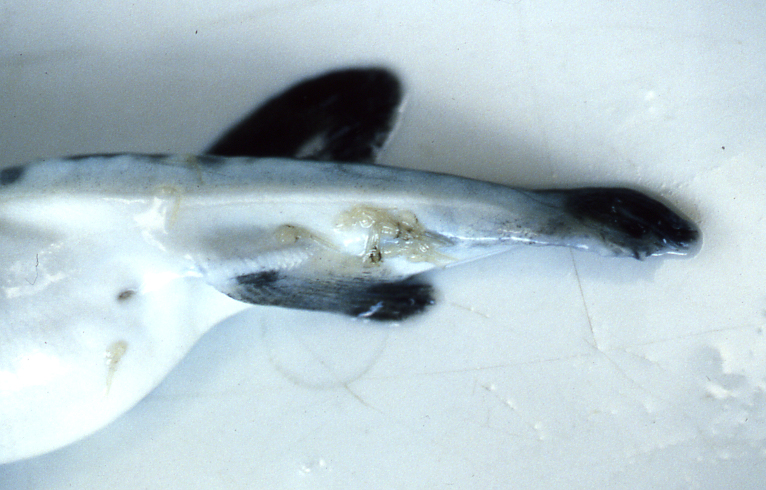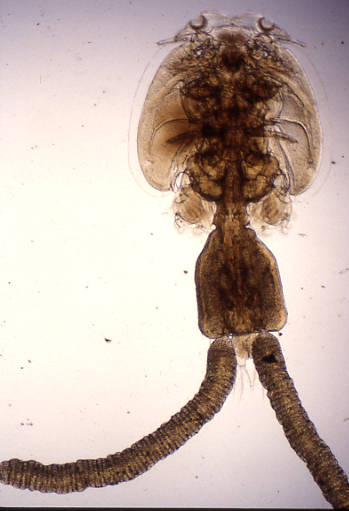
| Parasite | Pseudocaligus fugu |
|---|---|
| Taxonomy | Arthropoda, Crustacea, Copepoda, Siphonostomatoida |
| Hosts | Tiger puffer (Takifugu rubripes), grass puffer (Takifugu niphobles), panther puffer (Takifugu pardalis), finepatterned puffer (Takifugu poecilonotus) |
| Infection site | Skin |
| Clinical sign | Pseudocaligus fugu attaches on the body surface (Fig. 1). Skin wounds are sometimes observed in heavily infested fish. |
| Parasitology | Pseudocaligus fugu is a parasitic crustacean composed of cephalothoracic shield, thorax and abdomen. The body is 3-4cm and 2-3 cm long in female and male, respectively (Fig. 2). Hatched larvae (nauplius) develop to the copepodid, which settle on the host fish. The calimus, which are grown from the copopodid, attaches to the host by its frontal filaments, while the preadult and adult attaches by a pair of lunules, and move over the body surface of the host. The adult can parasitize another host following to detachment. The parasite feeds on host’s tissues. |
| Pathology | The skin of the host is injured by the attachment and feeding of the parasite. |
| Health hazard | Since this parasite is not infectious to human, it is harmless in food hygiene. |
| Diagnosis | Observe the morphology of the adult. Pseudocaligus can be differentiated from Caligus since the forth appendage of the former is reduced and not segmented. |
| Other information | The bath treatment with a hydrogen peroxide solution can be used to control the parasite. |
| References | Ogawa, K. (2006): Pseudocaligus
infection (Pseudocaligosis). New atlas of fish diseases (ed. by Hatai, K. and
K. Ogawa), Midori Shobo, p. 230. (In Japanese) |

Fig. 1. Pseudocaligus parasitizing aroud the anal orfice of tiger puffer.
Fig. 2. Female adult of P. fugu

(Photos by K. Ogawa)